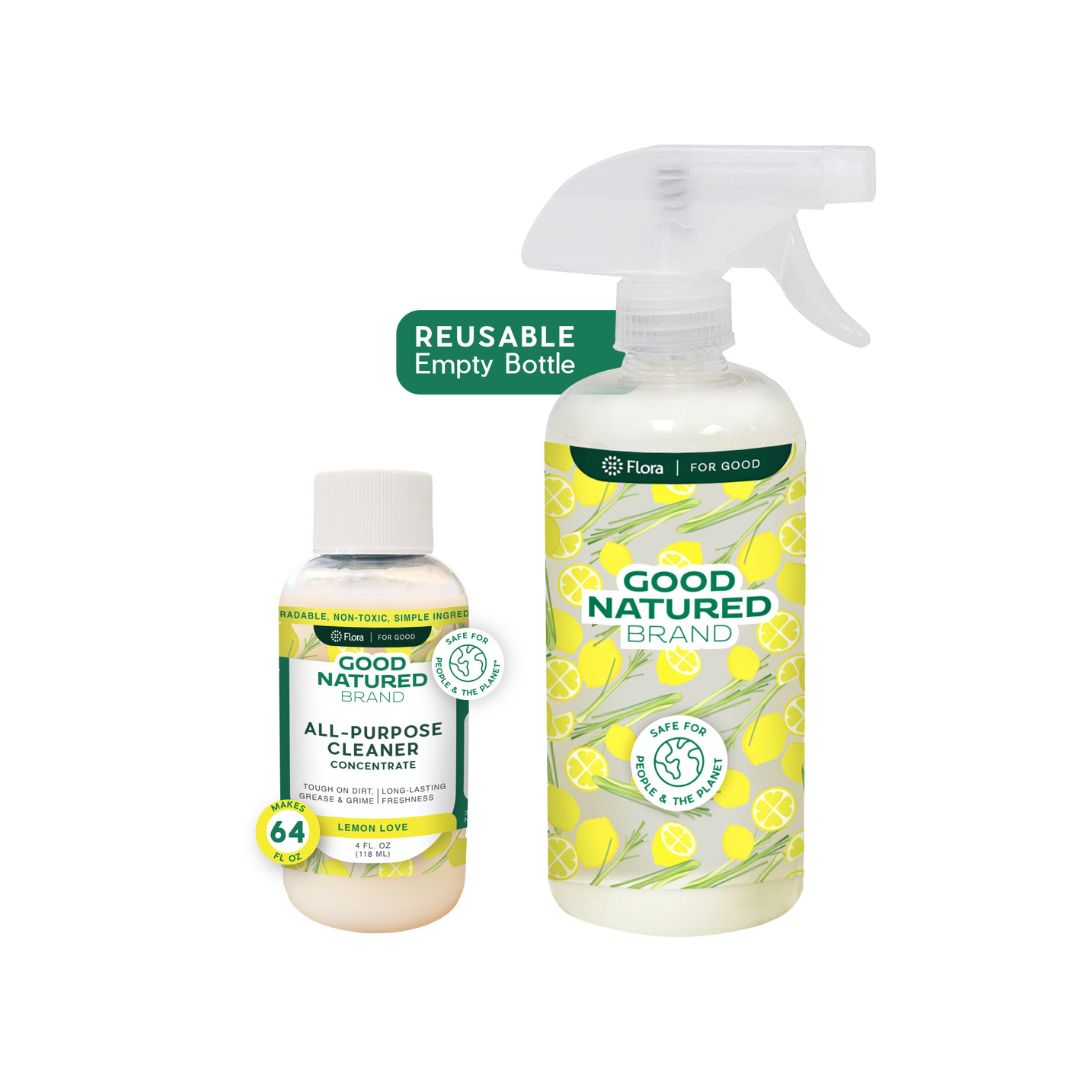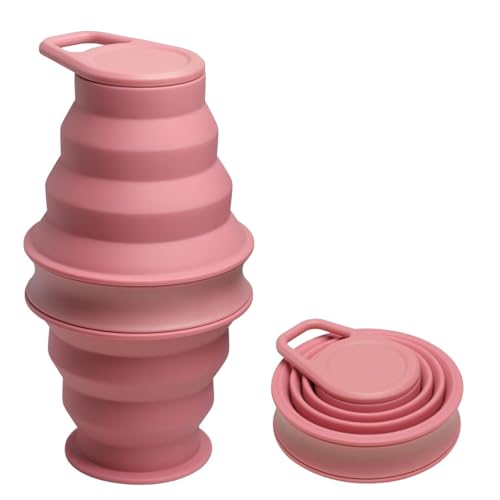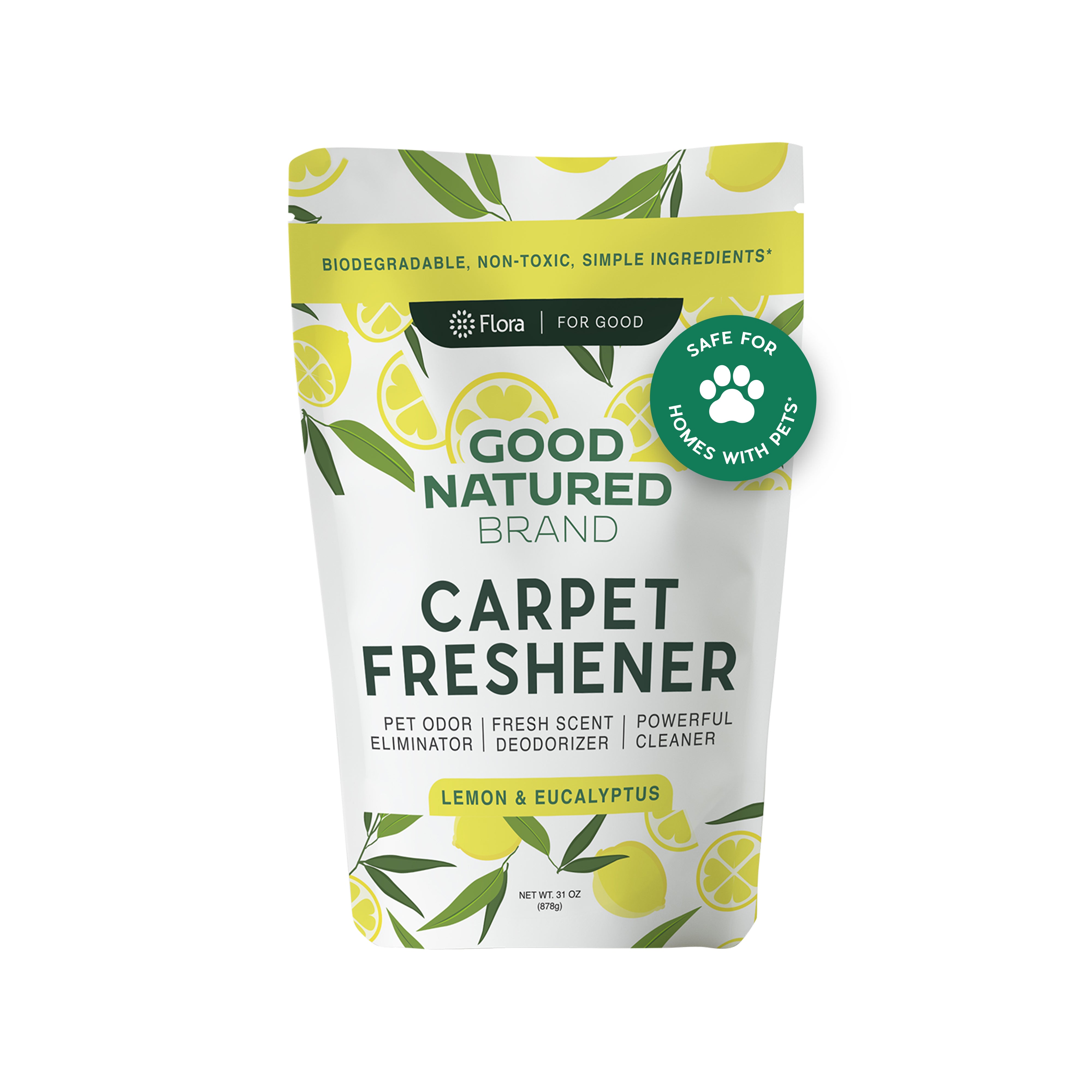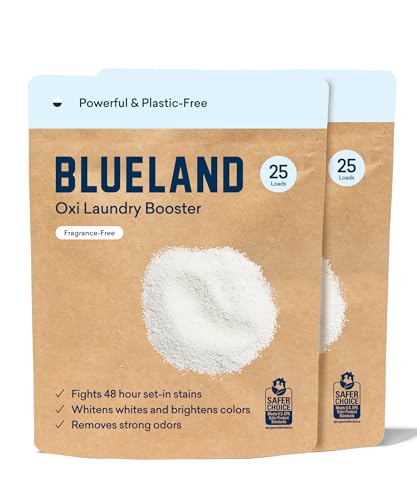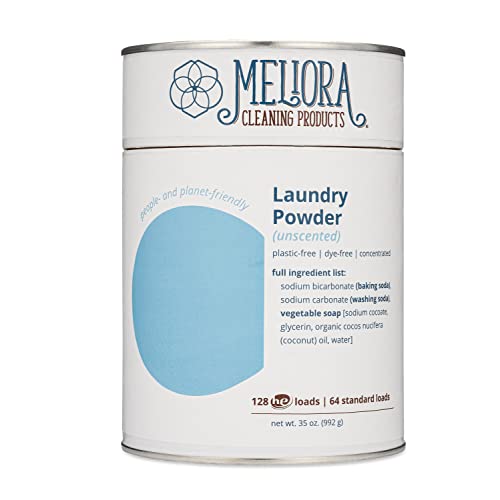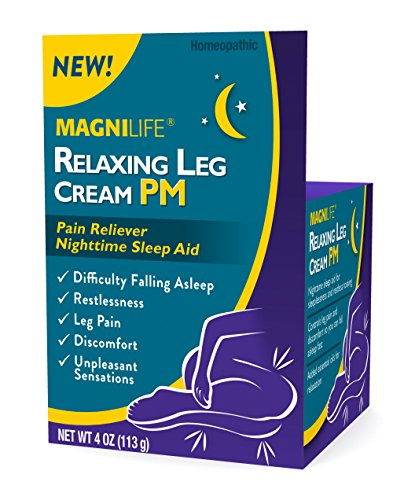
MagniLife Relaxing Leg Cream PM - Soothes Restless Legs, Lavender & Magnesium - 4oz


Retinyl Palmitate (Vitamin A Palmitate)
High RiskRetinyl palmitate, also known as vitamin A palmitate, is an ester of retinol and palmitic acid. It serves primarily as a skin-conditioning agent, promoting skin health and rejuvenation through its role in cellular turnover and differentiation. This ingredient is commonly used in cosmetic formulations.
Sustai Insights
Retinyl palmitate offers functional benefits such as enhancing skin texture and providing anti-aging effects. However, it is associated with high developmental and reproductive toxicity concerns, while also posing moderate risks for carcinogenicity. Environmentally, it may contribute to pollution and bioaccumulation. Regulatory bodies have imposed use restrictions due to these health risks, leading to an overall high-risk assessment. Safe usage practices are essential, and alternatives like retinol or plant-derived vitamin A sources may be considered.
Diazolidinyl Urea
High RiskDiazolidinyl urea is an antimicrobial preservative commonly used in cosmetic and personal care products to prevent microbial growth and extend shelf life. It functions by releasing small amounts of formaldehyde, which acts as a preservative.
Sustai Insights
Diazolidinyl urea serves effectively as a preservative, ensuring product longevity. However, it poses significant health risks, particularly a high potential for allergic reactions and immunotoxicity. Environmental concerns include its pollutant status and lack of biodegradability. Regulatory bodies have flagged its use, leading to restrictions in certain regions. Overall, the ingredient is associated with high risk, particularly for sensitive populations.
Propylparaben
High RiskPropylparaben is a member of the paraben family of preservatives commonly used in cosmetics and personal care products. It helps to inhibit the growth of harmful bacteria and mold, extending the shelf life of products and ensuring their safety during use.
Sustai Insights
Propylparaben functions effectively as a preservative, preventing microbial growth and maintaining product integrity. However, it has been linked to moderate concerns regarding allergies, endocrine disruption, and potential reproductive toxicity. Regulatory agencies have imposed restrictions on its use due to these health risks. Additionally, propylparaben may pose environmental hazards, including potential bioaccumulation. Overall, the ingredient is assessed as high risk, warranting cautious usage and consideration of safer alternatives.
Retinol (Vitamin A)
High RiskRetinol (vitamin A) is a naturally occurring substance primarily known for its role in skin health, often included in products aimed at improving skin texture and reducing signs of aging. It functions as a potent ingredient in skincare formulations, enhancing cellular turnover and promoting collagen production.
Sustai Insights
Retinol offers functional benefits such as enhancing skin absorption and improving skin appearance through increased turnover and collagen synthesis. However, its usage is associated with high concerns regarding developmental and reproductive toxicity and potential irritation. Environmental risks include its contribution to pollution, while regulatory bodies impose strict usage restrictions. Overall, the risk level is assessed as high, necessitating careful consideration in its application and the exploration of safer alternatives.
Polyacrylamide
High RiskPolyacrylamide is a synthetic polymer of acrylamide, commonly used in various formulations for its properties as a thickener, stabilizer, and emulsifier. It is utilized in personal care products, industrial applications, and wastewater treatment due to its ability to form gels and enhance texture.
Sustai Insights
Polyacrylamide offers functional benefits such as effective thickening and stabilizing, enhancing product consistency. However, it poses health risks like low potential for carcinogenicity and minimal allergenic concerns, but its use is highly restricted due to persistence and bioaccumulation in the environment. Regulatory bodies have issued warnings regarding its restricted use, leading to an overall high-risk assessment. Safe usage practices should be followed, and alternatives such as natural thickeners may be considered for sustainability.
Methylparaben
Medium RiskMethylparaben is a member of the paraben family, commonly used as a preservative in cosmetic and personal care products. It helps inhibit the growth of bacteria and fungi, thereby extending the shelf life of products.
Sustai Insights
Methylparaben serves effectively as a preservative, protecting products from microbial growth, and is generally considered safe at low concentrations. However, it has been associated with low to moderate risks of allergies and endocrine disruption. Regulatory bodies have imposed some restrictions on its use, but it is still considered low risk for carcinogenicity and developmental toxicity. Safe usage practices recommend adhering to established concentration thresholds, and alternatives like phenoxyethanol or ethylhexylglycerin could be considered for those seeking more sustainable options. Overall, the risk level associated with methylparaben is medium.
Propylene Glycol
Medium RiskPropylene glycol is a small organic alcohol commonly used in cosmetics and personal care products as a humectant, solvent, and emulsifier. It helps retain moisture, enhances product texture, and aids in the delivery of active ingredients.
Sustai Insights
Propylene glycol serves vital functional benefits, including moisture retention and product stability. It is generally recognized as safe with low concerns for carcinogenicity and developmental toxicity. However, there may be moderate allergenic potential for some individuals. Environmentally, it poses minimal pollution risks and is not bioaccumulative. Regulatory bodies do not impose significant restrictions on its use. Overall, it presents a medium risk due to its allergenic potential and the need for cautious usage in sensitive populations.
Salvia Officinalis (Sage) Leaf Extract
Medium RiskSalvia officinalis (sage) leaf extract is derived from the leaves of the sage plant, commonly used in various cosmetic formulations. It serves primarily as an antioxidant and antimicrobial agent, contributing to product stability and skin health.
Sustai Insights
Sage leaf extract offers functional benefits such as antioxidant properties and antimicrobial effects, enhancing product efficacy. It is sustainably sourced; however, moderate concerns exist regarding potential allergic reactions. Health risks are generally low, with minimal concerns about carcinogenicity or reproductive toxicity. Regulatory status is favorable, with no current restrictions noted. Overall, the ingredient presents a medium risk profile, and safe usage practices should be observed. Alternatives may include other herbal extracts with similar properties.
C13 14 Isoparaffin
Low RiskC13-14 isoparaffin is a mixture of hydrocarbon solvents commonly derived from petroleum. It is primarily used in cosmetic formulations as a skin-conditioning agent and emollient, providing a smooth texture and enhancing product spreadability.
Sustai Insights
C13-14 isoparaffin offers functional benefits as a skin-conditioning agent and emollient, contributing to product texture. It is not associated with significant health risks, showing low concerns for carcinogenicity, allergies, or reproductive toxicity. Environmentally, it poses a low risk of pollution and bioaccumulation. Regulatory bodies have not issued significant warnings or restrictions, indicating a favorable safety profile. Overall, the ingredient is assessed as low risk, with no immediate safety concerns. Alternatives may include plant-derived emollients for those seeking more sustainable options.
Lavandula Angustifolia (Lavender) Flower Oil
Low RiskLavandula angustifolia (lavender) flower oil is an essential oil derived from the flowers of the lavender plant. It is commonly used in personal care products for its aromatic properties and is known for its potential soothing effects in formulations.
Sustai Insights
Lavender oil provides functional benefits such as fragrance enhancement and potential calming effects, contributing to user experience in various personal care products. It is sustainably sourced and has low toxicity levels. Health risks associated with lavender oil are minimal, with low concerns for carcinogenicity, allergies, and reproductive toxicity. Environmental risks are also low, with no significant pollutant concerns. Regulatory assessments indicate no current restrictions, affirming its safety for use. Overall, the ingredient is considered low risk, making it a favorable choice in formulations.
Glycine Soja (Soybean) Oil
Low RiskGlycine soja (soybean) oil is derived from the seeds of the soybean plant and is commonly used in cosmetic formulations for its emollient properties. It functions as a moisturizer and skin conditioning agent, enhancing the texture and feel of products.
Sustai Insights
Glycine soja (soybean) oil offers functional benefits such as effective skin moisturization and conditioning. It is generally recognized as low-risk for health concerns, with minimal allergenic potential and no significant environmental hazards reported. Regulatory bodies have not imposed restrictions on its use. Overall, this ingredient is assessed as low risk, making it a suitable option for various cosmetic applications.
Magnesium Ascorbyl Phosphate
Low RiskMagnesium ascorbyl phosphate is a vitamin C derivative used in cosmetics primarily for its antioxidant properties and skin-brightening effects. It is often included in formulations for its ability to stabilize vitamin C, enhancing its efficacy in skin care products.
Sustai Insights
Magnesium ascorbyl phosphate offers functional benefits as an effective antioxidant and skin-brightening agent, contributing to improved skin appearance. It has a low risk profile concerning health, with minimal concerns regarding carcinogenicity, allergies, and reproductive toxicity. Environmental risks are also low, with no significant pollutant or bioaccumulation potential noted. Regulatory assessments indicate no major restrictions, supporting its safe use in cosmetic products. Overall, the ingredient is assessed as low risk, with safe usage practices recommended for optimal effectiveness.
Folic Acid
Low RiskFolic acid, also known as vitamin B9, is a water-soluble vitamin essential for DNA synthesis, repair, and methylation. It plays a critical role in cell division and is particularly important during periods of rapid growth, such as pregnancy and fetal development. It is commonly included in dietary supplements and fortified foods.
Sustai Insights
Folic acid offers functional benefits as a vital nutrient for cellular processes and is generally recognized as safe with low associated health risks, including carcinogenicity, allergenic potential, and reproductive toxicity. It is not restricted by regulatory bodies, and sustainable sourcing practices are often employed. Environmental risks are minimal, with no significant pollutant or bioaccumulation concerns. While the ingredient can be beneficial for pregnant women, safe usage practices should be observed to avoid excessive intake. Overall, the risk level associated with folic acid is low, with no major adverse effects reported.
Cananga Odorata (Ylang Ylang) Extract
Low RiskCananga odorata (ylang ylang) extract is derived from the flowers of the Cananga odorata tree. It is commonly used in cosmetics and personal care products for its fragrance and potential skin benefits. The extract is known for its floral scent and is often included in formulations for aromatherapy and perfumery.
Sustai Insights
Cananga odorata extract offers functional benefits as a natural fragrance and may have skin-conditioning properties. It is sustainably sourced and biodegradable. Health risks are low, with no significant concerns regarding carcinogenicity, allergies, or reproductive toxicity. Environmental risks are minimal, and it does not contribute to pollution or bioaccumulation. Regulatory bodies have not imposed restrictions on its use. Overall, the risk level is low, and safe usage practices should be followed, with alternatives including other natural extracts for fragrance.
Laureth 7
Low RiskLaureth-7 is a polyethylene glycol-based surfactant commonly used in personal care products for its emulsifying and cleansing properties. It helps to stabilize formulations and improve texture, facilitating the mixture of oil and water. Additionally, it enhances the spreadability of products on the skin.
Sustai Insights
Laureth-7 serves as an effective emulsifier, contributing to product stability and texture enhancement. It is generally considered low risk concerning carcinogenicity, allergies, and reproductive toxicity. Environmental concerns are minimal, as it does not significantly contribute to pollution or bioaccumulation. Regulatory bodies impose few restrictions, affirming its safety profile. Safe usage practices include avoiding use in high concentrations, particularly in sensitive areas. Alternatives like plant-derived emulsifiers may be explored for sustainability. Overall, the ingredient presents a low-risk assessment.
Water
Low RiskWater is a clear, colorless liquid essential for various biological processes. It serves as a solvent in formulations, facilitating the dissolution of other ingredients and enhancing product texture and application. Additionally, water plays a crucial role in hydration and is a key component in many cosmetic and personal care products.
Sustai Insights
Water is an effective solvent and hydrator, contributing to the texture and efficacy of formulations. It is biodegradable and generally regarded as safe, with low concerns regarding carcinogenicity, allergies, and reproductive toxicity. However, excessive water usage can lead to environmental concerns, particularly regarding resource depletion. Regulatory bodies do not impose restrictions on water use in cosmetics. Overall, the risks associated with water are low, making it a safe and essential ingredient.
C13 14 Isoparaffin
Low RiskC13-14 isoparaffin is a mixture of hydrocarbon solvents commonly derived from petroleum. It is primarily used in cosmetic formulations as a skin-conditioning agent and emollient, providing a smooth texture and enhancing product spreadability.
Sustai Insights
C13-14 isoparaffin offers functional benefits as a skin-conditioning agent and emollient, contributing to product texture. It is not associated with significant health risks, showing low concerns for carcinogenicity, allergies, or reproductive toxicity. Environmentally, it poses a low risk of pollution and bioaccumulation. Regulatory bodies have not issued significant warnings or restrictions, indicating a favorable safety profile. Overall, the ingredient is assessed as low risk, with no immediate safety concerns. Alternatives may include plant-derived emollients for those seeking more sustainable options.
Methylparaben
Medium RiskMethylparaben is a member of the paraben family, commonly used as a preservative in cosmetic and personal care products. It helps inhibit the growth of bacteria and fungi, thereby extending the shelf life of products.
Sustai Insights
Methylparaben serves effectively as a preservative, protecting products from microbial growth, and is generally considered safe at low concentrations. However, it has been associated with low to moderate risks of allergies and endocrine disruption. Regulatory bodies have imposed some restrictions on its use, but it is still considered low risk for carcinogenicity and developmental toxicity. Safe usage practices recommend adhering to established concentration thresholds, and alternatives like phenoxyethanol or ethylhexylglycerin could be considered for those seeking more sustainable options. Overall, the risk level associated with methylparaben is medium.
Lavandula Angustifolia (Lavender) Flower Oil
Low RiskLavandula angustifolia (lavender) flower oil is an essential oil derived from the flowers of the lavender plant. It is commonly used in personal care products for its aromatic properties and is known for its potential soothing effects in formulations.
Sustai Insights
Lavender oil provides functional benefits such as fragrance enhancement and potential calming effects, contributing to user experience in various personal care products. It is sustainably sourced and has low toxicity levels. Health risks associated with lavender oil are minimal, with low concerns for carcinogenicity, allergies, and reproductive toxicity. Environmental risks are also low, with no significant pollutant concerns. Regulatory assessments indicate no current restrictions, affirming its safety for use. Overall, the ingredient is considered low risk, making it a favorable choice in formulations.
Retinyl Palmitate (Vitamin A Palmitate)
High RiskRetinyl palmitate, also known as vitamin A palmitate, is an ester of retinol and palmitic acid. It serves primarily as a skin-conditioning agent, promoting skin health and rejuvenation through its role in cellular turnover and differentiation. This ingredient is commonly used in cosmetic formulations.
Sustai Insights
Retinyl palmitate offers functional benefits such as enhancing skin texture and providing anti-aging effects. However, it is associated with high developmental and reproductive toxicity concerns, while also posing moderate risks for carcinogenicity. Environmentally, it may contribute to pollution and bioaccumulation. Regulatory bodies have imposed use restrictions due to these health risks, leading to an overall high-risk assessment. Safe usage practices are essential, and alternatives like retinol or plant-derived vitamin A sources may be considered.
Diazolidinyl Urea
High RiskDiazolidinyl urea is an antimicrobial preservative commonly used in cosmetic and personal care products to prevent microbial growth and extend shelf life. It functions by releasing small amounts of formaldehyde, which acts as a preservative.
Sustai Insights
Diazolidinyl urea serves effectively as a preservative, ensuring product longevity. However, it poses significant health risks, particularly a high potential for allergic reactions and immunotoxicity. Environmental concerns include its pollutant status and lack of biodegradability. Regulatory bodies have flagged its use, leading to restrictions in certain regions. Overall, the ingredient is associated with high risk, particularly for sensitive populations.
Propylparaben
High RiskPropylparaben is a member of the paraben family of preservatives commonly used in cosmetics and personal care products. It helps to inhibit the growth of harmful bacteria and mold, extending the shelf life of products and ensuring their safety during use.
Sustai Insights
Propylparaben functions effectively as a preservative, preventing microbial growth and maintaining product integrity. However, it has been linked to moderate concerns regarding allergies, endocrine disruption, and potential reproductive toxicity. Regulatory agencies have imposed restrictions on its use due to these health risks. Additionally, propylparaben may pose environmental hazards, including potential bioaccumulation. Overall, the ingredient is assessed as high risk, warranting cautious usage and consideration of safer alternatives.
Retinol (Vitamin A)
High RiskRetinol (vitamin A) is a naturally occurring substance primarily known for its role in skin health, often included in products aimed at improving skin texture and reducing signs of aging. It functions as a potent ingredient in skincare formulations, enhancing cellular turnover and promoting collagen production.
Sustai Insights
Retinol offers functional benefits such as enhancing skin absorption and improving skin appearance through increased turnover and collagen synthesis. However, its usage is associated with high concerns regarding developmental and reproductive toxicity and potential irritation. Environmental risks include its contribution to pollution, while regulatory bodies impose strict usage restrictions. Overall, the risk level is assessed as high, necessitating careful consideration in its application and the exploration of safer alternatives.
Polyacrylamide
High RiskPolyacrylamide is a synthetic polymer of acrylamide, commonly used in various formulations for its properties as a thickener, stabilizer, and emulsifier. It is utilized in personal care products, industrial applications, and wastewater treatment due to its ability to form gels and enhance texture.
Sustai Insights
Polyacrylamide offers functional benefits such as effective thickening and stabilizing, enhancing product consistency. However, it poses health risks like low potential for carcinogenicity and minimal allergenic concerns, but its use is highly restricted due to persistence and bioaccumulation in the environment. Regulatory bodies have issued warnings regarding its restricted use, leading to an overall high-risk assessment. Safe usage practices should be followed, and alternatives such as natural thickeners may be considered for sustainability.
Glycine Soja (Soybean) Oil
Low RiskGlycine soja (soybean) oil is derived from the seeds of the soybean plant and is commonly used in cosmetic formulations for its emollient properties. It functions as a moisturizer and skin conditioning agent, enhancing the texture and feel of products.
Sustai Insights
Glycine soja (soybean) oil offers functional benefits such as effective skin moisturization and conditioning. It is generally recognized as low-risk for health concerns, with minimal allergenic potential and no significant environmental hazards reported. Regulatory bodies have not imposed restrictions on its use. Overall, this ingredient is assessed as low risk, making it a suitable option for various cosmetic applications.
Magnesium Ascorbyl Phosphate
Low RiskMagnesium ascorbyl phosphate is a vitamin C derivative used in cosmetics primarily for its antioxidant properties and skin-brightening effects. It is often included in formulations for its ability to stabilize vitamin C, enhancing its efficacy in skin care products.
Sustai Insights
Magnesium ascorbyl phosphate offers functional benefits as an effective antioxidant and skin-brightening agent, contributing to improved skin appearance. It has a low risk profile concerning health, with minimal concerns regarding carcinogenicity, allergies, and reproductive toxicity. Environmental risks are also low, with no significant pollutant or bioaccumulation potential noted. Regulatory assessments indicate no major restrictions, supporting its safe use in cosmetic products. Overall, the ingredient is assessed as low risk, with safe usage practices recommended for optimal effectiveness.
Folic Acid
Low RiskFolic acid, also known as vitamin B9, is a water-soluble vitamin essential for DNA synthesis, repair, and methylation. It plays a critical role in cell division and is particularly important during periods of rapid growth, such as pregnancy and fetal development. It is commonly included in dietary supplements and fortified foods.
Sustai Insights
Folic acid offers functional benefits as a vital nutrient for cellular processes and is generally recognized as safe with low associated health risks, including carcinogenicity, allergenic potential, and reproductive toxicity. It is not restricted by regulatory bodies, and sustainable sourcing practices are often employed. Environmental risks are minimal, with no significant pollutant or bioaccumulation concerns. While the ingredient can be beneficial for pregnant women, safe usage practices should be observed to avoid excessive intake. Overall, the risk level associated with folic acid is low, with no major adverse effects reported.
Cananga Odorata (Ylang Ylang) Extract
Low RiskCananga odorata (ylang ylang) extract is derived from the flowers of the Cananga odorata tree. It is commonly used in cosmetics and personal care products for its fragrance and potential skin benefits. The extract is known for its floral scent and is often included in formulations for aromatherapy and perfumery.
Sustai Insights
Cananga odorata extract offers functional benefits as a natural fragrance and may have skin-conditioning properties. It is sustainably sourced and biodegradable. Health risks are low, with no significant concerns regarding carcinogenicity, allergies, or reproductive toxicity. Environmental risks are minimal, and it does not contribute to pollution or bioaccumulation. Regulatory bodies have not imposed restrictions on its use. Overall, the risk level is low, and safe usage practices should be followed, with alternatives including other natural extracts for fragrance.
Propylene Glycol
Medium RiskPropylene glycol is a small organic alcohol commonly used in cosmetics and personal care products as a humectant, solvent, and emulsifier. It helps retain moisture, enhances product texture, and aids in the delivery of active ingredients.
Sustai Insights
Propylene glycol serves vital functional benefits, including moisture retention and product stability. It is generally recognized as safe with low concerns for carcinogenicity and developmental toxicity. However, there may be moderate allergenic potential for some individuals. Environmentally, it poses minimal pollution risks and is not bioaccumulative. Regulatory bodies do not impose significant restrictions on its use. Overall, it presents a medium risk due to its allergenic potential and the need for cautious usage in sensitive populations.
Laureth 7
Low RiskLaureth-7 is a polyethylene glycol-based surfactant commonly used in personal care products for its emulsifying and cleansing properties. It helps to stabilize formulations and improve texture, facilitating the mixture of oil and water. Additionally, it enhances the spreadability of products on the skin.
Sustai Insights
Laureth-7 serves as an effective emulsifier, contributing to product stability and texture enhancement. It is generally considered low risk concerning carcinogenicity, allergies, and reproductive toxicity. Environmental concerns are minimal, as it does not significantly contribute to pollution or bioaccumulation. Regulatory bodies impose few restrictions, affirming its safety profile. Safe usage practices include avoiding use in high concentrations, particularly in sensitive areas. Alternatives like plant-derived emulsifiers may be explored for sustainability. Overall, the ingredient presents a low-risk assessment.
Salvia Officinalis (Sage) Leaf Extract
Medium RiskSalvia officinalis (sage) leaf extract is derived from the leaves of the sage plant, commonly used in various cosmetic formulations. It serves primarily as an antioxidant and antimicrobial agent, contributing to product stability and skin health.
Sustai Insights
Sage leaf extract offers functional benefits such as antioxidant properties and antimicrobial effects, enhancing product efficacy. It is sustainably sourced; however, moderate concerns exist regarding potential allergic reactions. Health risks are generally low, with minimal concerns about carcinogenicity or reproductive toxicity. Regulatory status is favorable, with no current restrictions noted. Overall, the ingredient presents a medium risk profile, and safe usage practices should be observed. Alternatives may include other herbal extracts with similar properties.
Water
Low RiskWater is a clear, colorless liquid essential for various biological processes. It serves as a solvent in formulations, facilitating the dissolution of other ingredients and enhancing product texture and application. Additionally, water plays a crucial role in hydration and is a key component in many cosmetic and personal care products.
Sustai Insights
Water is an effective solvent and hydrator, contributing to the texture and efficacy of formulations. It is biodegradable and generally regarded as safe, with low concerns regarding carcinogenicity, allergies, and reproductive toxicity. However, excessive water usage can lead to environmental concerns, particularly regarding resource depletion. Regulatory bodies do not impose restrictions on water use in cosmetics. Overall, the risks associated with water are low, making it a safe and essential ingredient.
Experience soothing relief with MagniLife Relaxing Leg Cream PM, a deep-penetrating topical designed to alleviate discomfort and restlessness associated with Pain and Restless Leg Syndrome. Infused with calming lavender and magnesium, this herbal cream helps you unwind for a restful night's sleep.
- Natural Relief: Formulated to relax and soothe discomfort, facilitating better sleep without side effects.
- All-Natural Ingredients: Crafted with magnesium, aloe, and lavender, this non-greasy cream provides intense moisture and fast-acting relief.
- Easy Application: Simply massage into legs and feet before bedtime to promote relaxation, making it a perfect alternative to sleep aids.
- Safe and Gentle: Plant-derived and non-interfering with medications, it's suitable for those seeking natural solutions.
- Trusted Brand: With over 20 years of commitment to quality, MagniLife ensures excellence in each product, supporting a healthy lifestyle.
Rediscover restful sleep with this effective, eco-friendly solution tailored for health-conscious consumers.
Subscribe & Save with Sustai
- Best Price Guarantee: Always enjoy the lowest prices on sustainable home essentials.
- No Surprises: We’ll notify you before shipping. No hidden fees, ever.
- You’re in Charge: Change, pause, or cancel your subscription anytime with ease.
- Eco-Friendly Deliveries: Our grouped shipments mean less packaging and lower emissions.
Join us on a sustainable journey. Special offers for a limited time! Prices and promotions may change.
Recommended Products
Experience soothing relief with MagniLife Relaxing Leg Cream PM, a deep-penetrating topical designed to alleviate discomfort and restlessness associated with Pain and Restless Leg Syndrome. Infused with calming lavender and magnesium, this herbal cream helps you unwind for a restful night's sleep.
- Natural Relief: Formulated to relax and soothe discomfort, facilitating better sleep without side effects.
- All-Natural Ingredients: Crafted with magnesium, aloe, and lavender, this non-greasy cream provides intense moisture and fast-acting relief.
- Easy Application: Simply massage into legs and feet before bedtime to promote relaxation, making it a perfect alternative to sleep aids.
- Safe and Gentle: Plant-derived and non-interfering with medications, it's suitable for those seeking natural solutions.
- Trusted Brand: With over 20 years of commitment to quality, MagniLife ensures excellence in each product, supporting a healthy lifestyle.
Rediscover restful sleep with this effective, eco-friendly solution tailored for health-conscious consumers.

You can have at most 2 Sustainable Steals products in your cart
Customer Reviews
Customers’ View
Customers appreciate the effectiveness of this topical pain relief cream, particularly for alleviating restless leg syndrome and promoting better sleep. Many users report a noticeable reduction in discomfort shortly after application, with one customer noting, "the impulses subsided over the next several minutes." The cream's natural ingredients, including magnesium and aloe, resonate well with health-conscious consumers, as they find it safe for use alongside medications. Additionally, the non-greasy formula allows for quick absorption, enhancing user experience. While some users suggest it may be more effective for mild symptoms, overall, customers find this product to provide significant relief while aligning with their wellness goals.
AI-generated from the text of customer reviewsThis product has no reviews yet.
